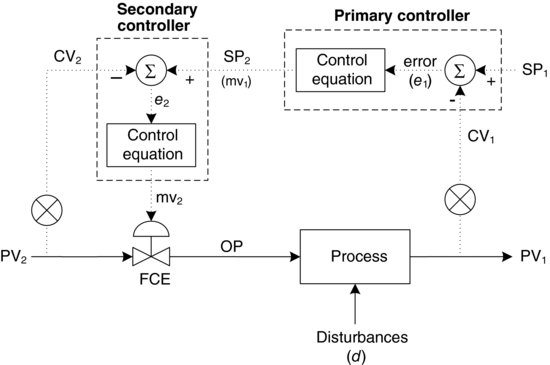6
Advanced Topics in Classical Automatic Control
Up to this point discussion has been restricted to feedback control loops, the most common control method used in process industries. However, there are a number of more complex control techniques that should also be considered [1], which can provide improved and economic process control. Some of the control schemes that are discussed in this chapter include cascade, feedforward, ratio and override control. These schemes are classified as ‘advanced classical’ [1] topics and are widely used in industry.
6.1 Cascade Control
Leading industrial practitioners have indicated that cascade control is a widely used controller configuration. Hence, it needs to be stressed in an undergraduate control course and its inclusion here is as the fore most advanced classical control technique.
Cascade control is a control technique that uses two controllers with one feedback loop nested inside the other [2–4]. The output of the primary controller acts as the set point for the secondary controller. The secondary controller controls the final control element (FCE). A typical cascade control loop is illustrated in Figure 6.1.
Figure 6.1 Cascade control system.

To better understand cascade control, we will examine a typical feedback control scheme and consider how it may be improved through the use of cascade control. Let us consider the feedback control ...
Get A Real-Time Approach to Process Control, 3rd Edition now with the O’Reilly learning platform.
O’Reilly members experience books, live events, courses curated by job role, and more from O’Reilly and nearly 200 top publishers.

